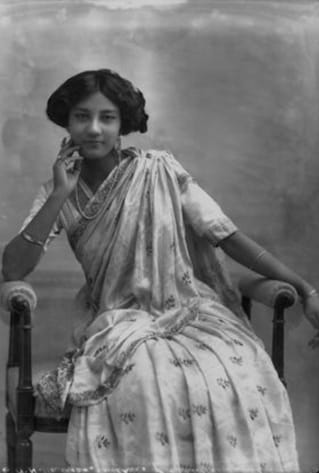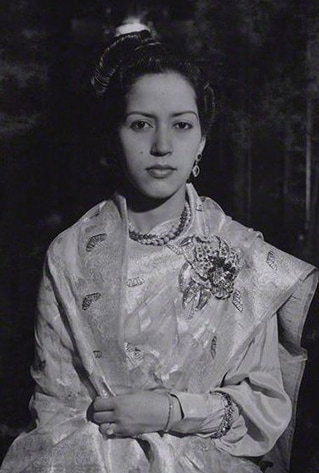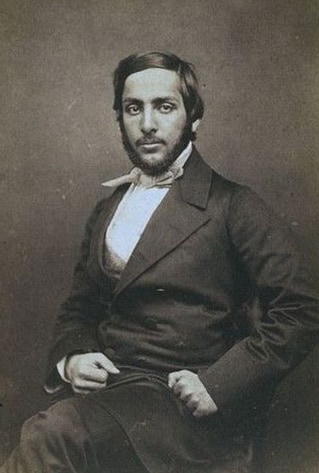“At the stroke of the midnight hour, when the world sleeps, India will awaken to life & freedom” – these words by Jawaharlal Nehru will forever be etched in every Indian’s heart, and incite goosebumps every time they fall upon our ears. They tell the tale of a country that resisted well and fought a successful battle with one common goal in mind – taking back what was rightfully its own.
Today, 15th August 2020, marks India’s 74th Independence Day. It has been quite the journey, and the roots of our country remain unshaken, with unity thriving even in diversity.
We’re no strangers to the fact that as with every other rule, the British Raj too stirred up a lot of changes in the ways of our people. One of the most significant transformations though was the perception of clothing. Before colonisation, Indian fashion was based primarily on weather conditions, and, clothing aligned with ‘convenience’. Later though, instead of evolving creative expression, Indian fashion partly gave in to the ways of the English. It wasn’t a direct effect of colonisation, but stemmed from the strategy of ‘Divide & Rule.’ Indian wardrobes welcomed European fashion by will, by force or by significance.
We’ve all heard narratives of how the people who approved of the Goras’ dress code and etiquettes instantly received better treatment than the ones who resisted and called it outrageous. Those who fell in the ‘elite’ category were exempted from atrocities faced by others. Slowly, the people started retaliating under the leadership of various figures.
But what were the elements that defined Indian attire during the Raj? What stayed, and was there anything that left when the English did? Here, we let our curiosity take the front seat and delve into Pre & Post Independence fashion in India.
Blouses & Petticoats
An influence of the Raj.
For most of us, history lessons in school comprised images from a world we couldn’t deem familiar, and pictures of sculptures & paintings depicting age-old Indian dressing. Blouses and petticoats once were an alien concept, even though cholis and lehengas existed among other stitched pieces. A significant percentage of women wore a drape of white coloured, yards-long cloth called the saree, and it was integral to battling hot & humid weather conditions. The entry of the Britishers brought with it an upturned smile about the layers that were lacking in the saree. The rulers found it offensive to wear it without a blouse or a petticoat, thus infusing it with European influences.

Saree before the Raj 
Saree during the Raj (and now.)
Fast-forward to the years following 1947, blouses and petticoats made a permanent home for themselves in every wardrobe. Even today, one isn’t complete without the other when it comes to the traditional silhouette. With western culture much more prominent in the decolonised, well-travelled and evolved India, we love how the same saree continues to see several renditions that everyone adores.
The Indian cinema, even when it loved western trends, never forgot the significance of the drape and has delivered some of the most iconic saree looks! Pieces like denim, shirts, skirts, etc. slowly found a spot in young women’s wardrobes, but sarees were still a treasure and will always be.
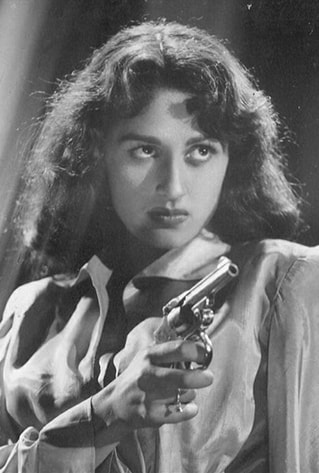
Beena Rai 
Meena Kumari
Saree Pins
An added accessory.
Indians were most definitely picking up on the various ways that the English chose to dress up. Don’t we all have that one beautiful brooch that we’ve seen in our mothers’ or grandmothers’ bauble box? Whether it is already passed on to us or not – it does make us wonder what pushed the older generations into pinning up their saree or dupattas with these brooches, instead of the ordinary pin. Their introduction to Indian jewels can be somewhat credited to European fashion trends. Indian women would see the Memsahibs finish off their looks with stunning pins and brooches which were ever-so-delicately crafted, and they were all the rage in England at the time.
(Safe to say that one look at these elaborate pins makes us want to raid the heirloom jewels safely stored in Mom’s closet!)
Suited Up!
Indian fashion history for men.
Dhoti-Kurta was the traditional and humble way of dressing for Indian men. Due to broad classifications and a large number of people following the same dressing style, several men adapted the shirt-trouser styles that the Sahibs wore. Indian Kings were extremely fond of the British dress code, as were some of the commoners. When it came to the others, wearing shirts and suiting up meant that they’d be favoured and thought that it signified literacy since clothing became a symbol of the position one held in the society.
When the British left India, shirts & trousers were etched into Indian attire so much that they didn’t seem foreign anymore. Bollywood played a massive role in infusing Indian fashion with western influences. The films made them famous, but that doesn’t mean Indian men forgot their humble ways of dressing. They were still depicted with kurtas and dhotis, mainly in white.
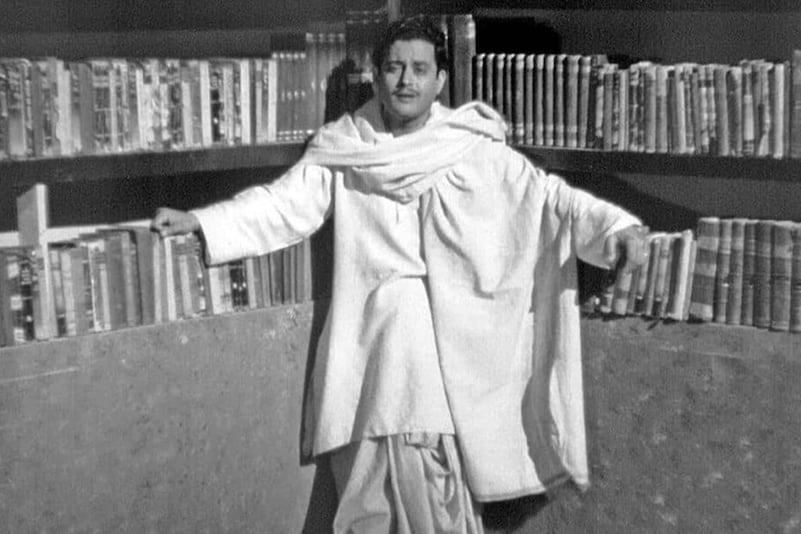
A still from Pyaasa (1957)
Khadi
A fabric and a movement.
The government and activists are encouraging present-day India to turn to locally-made products in every sector. This will open up a lot of opportunities for our people. It’ll also lessen the need to look elsewhere for work or get work done. ‘Self-sufficient’ is a word that we must strive to live by as much as we can.
But if we look back at the days of the Raj, we’ll see a movement being led by Gandhiji. Its purpose was much larger and very impactful, and further shaped the history of fashion in India. The movement used clothing as a means to send a message to the colonisers and the colonised. It was Gandhi’s Khadi-Swaraj movement is notable in every way. Khadi was a fabric that screamed ‘unity’. It aimed at abolishing societal issues like untouchability, while also trying to bridge the gap between the rich & the poor. Khadi was everyone’s fabric; everyone who wanted to see an India that was free, self-sufficient and on the road to reviving the Indian economy. He encouraged everyone to take to the charkha and weave every day.
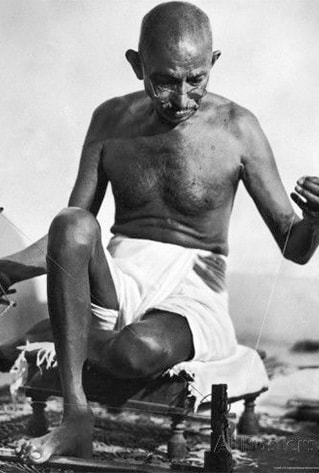
Economic independence & equality were the ultimate goals of the khaddar weave. The once politically-infused fabric is now a symbol of Indian-ness the world over. Designers aren’t only working towards a full-fledged revival of this intellectual fabric but also making it stylish for the youth. The coarse texture that it once bore has evolved into smoother, airier weaves. Khadi is a huge part of the ethical fashion movement. For Indians though, it isn’t just a fabric that employed many or signifies resistance – it’s our pride.
Fashion has always been a considerable part of India’s history. Given a choice, we know we would always pick authentic Indian silhouettes over anything else. We like to define the words ‘pride of India’ as pieces that survived it all. The people of our nation found a voice through clothing. That is why, no matter the modifications, they will always remain unapologetically Indian, in our eyes – and the world’s.
Image credits: Pinterest
